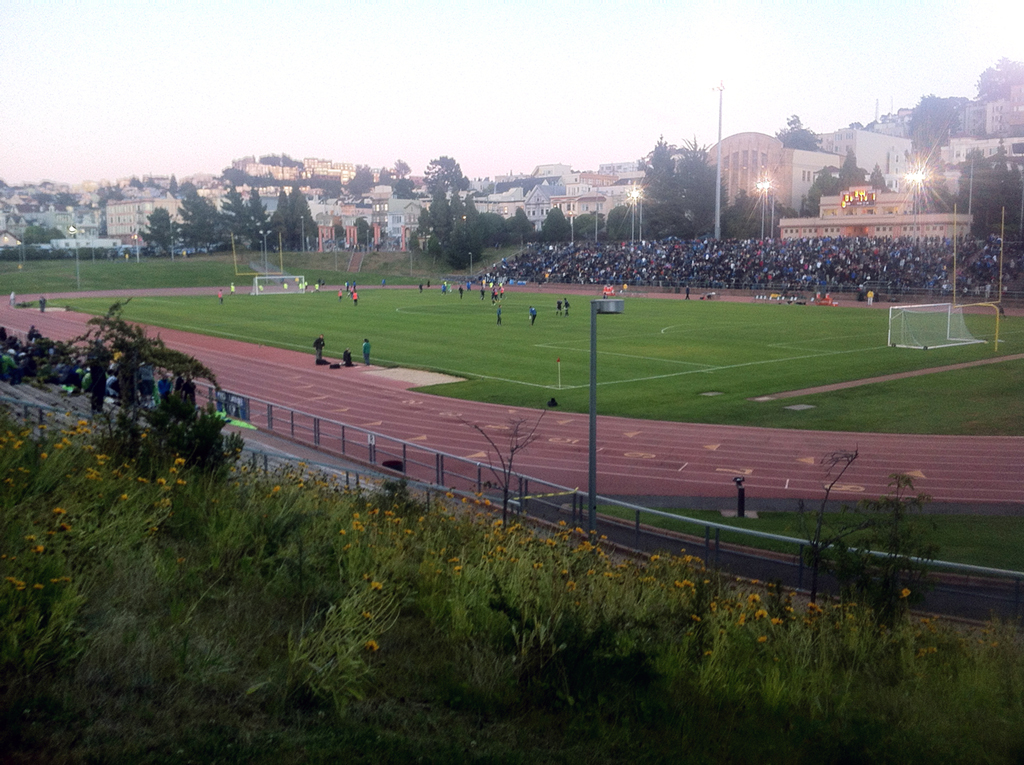San Francisco is well-known as a city of technology, innovation, and diversity. Its newest soccer club, the San Francisco Deltas, aims to bring soccer back to the city and to be a reflection of the character of the city itself.
According to club C.E.O. Brian Andres Helmick, a Colombian native and former tech executive who has lived in San Francisco for 13 years, “We want to marry technology with the reality of our city’s diversity. We see the Deltas as an opportunity to bring the community together and create social good.”
The recently unveiled San Francisco Deltas team, set to start play in 2017, released detailed plans in a press release after securing a stadium deal. San Francisco City Council approved a five-year permit on March 17 for the Deltas to play home games at Kezar Stadium, located in Golden Gate Park. There is another big goal as part of the deal: The Deltas would become the NASL’s first West Coast team.
Kezar Stadium has a rich history — the original stadium on the site opened in 1946 and had a capacity of almost 60,000. It was the original home of the NFL’s San Francisco 49ers, who played there until 1970 when they moved to Candlestick Park.
The original stadium had broad and varied purposes. In addition to the 49ers, it was also briefly the home stadium of the Raiders — for four games in 1960 — before they moved to Oakland. Its soccer history includes an appearance by Pele, when Santos played there. It also hosted cricket, lacrosse, boxing and motorcycle racing, as well as concerts by Bob Dylan, the Grateful Dead and Led Zeppelin. The stadium was torn down in 1989, when it was replaced with the current iteration — a 10,000-seater.
The historical Kezar Stadium — a true multi-use facility — is something Helmick hopes to emulate with the planned renovations for San Francisco Deltas use. “We want to make improvements for the community, not just for us. We’ll only be a small user — maybe 15-20 days a year — we want to create something that benefits everyone.” The team agreed to spend around $500,000 in stadium upgrades as a part of the permit deal.
Helmick suggested that the stadium needs work to be ready for professional soccer, though he notes the pitch itself is in amazing condition. The stadium went through a minor renovation just a few years ago, but the club has big plans for the facility. Borrowing a tech term, he calls the stadium the Deltas’ “incubator home,” as the team hopes to develop a bigger venue once the team and fan base grows.
The original locker rooms, dating to the 49ers era, still exist on the site, and the team plans to renovate them with a nod to their historical significance, incorporating interviews with former NFL players in the restoration. A tunnel connecting the locker rooms and the pitch will also be redone and upgraded, including the installation of historical plaques recovered from the demolished Candlestick Park.
Additional improvements at Kezar will include seating and lighting upgrades — all with the goal of making the stadium better for players, fans, and the local neighborhood.
Helmick chooses to see some of the underdeveloped aspects of the stadium as an opportunity rather than a negative, a “blank slate” they can solve with technology and innovation.
For example, Kezar Stadium currently has no concessions facilities. So, the San Francisco Deltas front office has announced that they will employ food trucks — already popular in San Francisco — to fill the void. Fans will choose the trucks at each game based on online polling, one of the many ways technology will be utilized to enhance the fan experience.
The San Francisco Deltas also plans to use technology in the ticketing process, using algorithms that would allow fans to sit with various locations in the stadium according to their preferences, changing locations from game to game. A fan could sit with other families if they are bringing their children, or with the ultra supporters, or with others who speak the same language, or support the same European club. Helmick believes this uniquely suits San Francisco, where 40 percent of city residents were born outside the United States, and where early adoption of technology is the norm.
The Deltas also plans to use technology for facilitating stadium access for fans, using rideshare technologies, remote shuttles and bike racks. “San Francisco is a city where people get around without driving,” he said.
Kezar Stadium has a rich history, and the Deltas plan to use technology to make it into a first rate professional soccer venue.
Helmick believes the club’s innovative practices can be a model for clubs across the country, and around the world. “In terms of fan experience, we hope to say ‘look what we can do here,’ we want to share those lessons with the world.”

